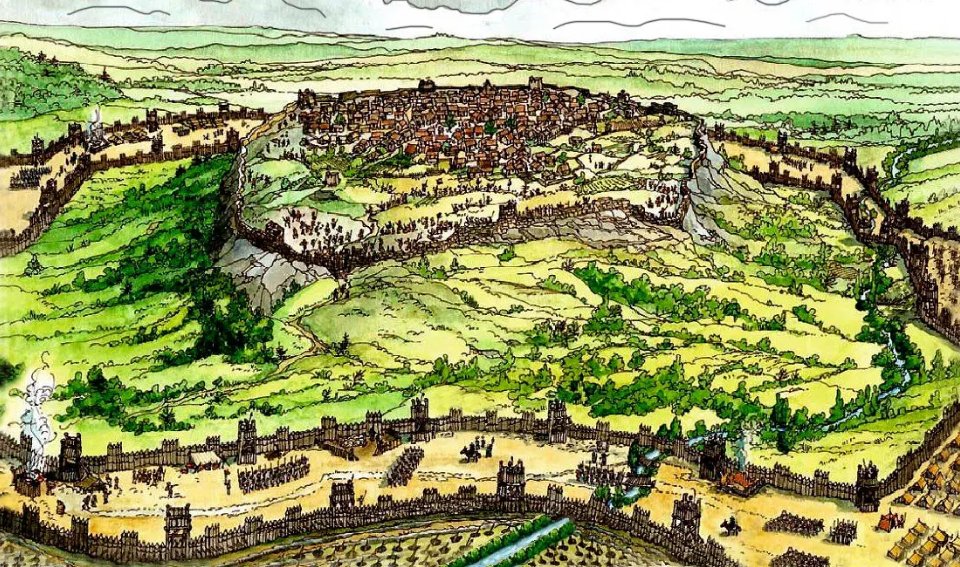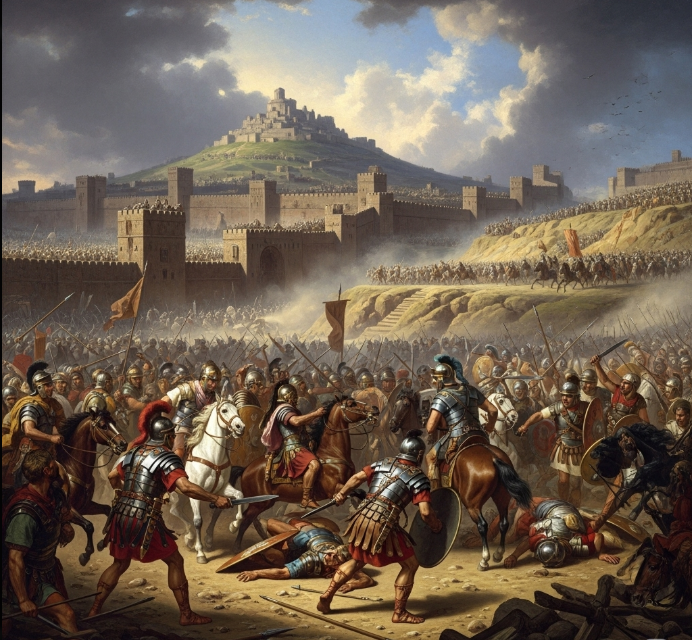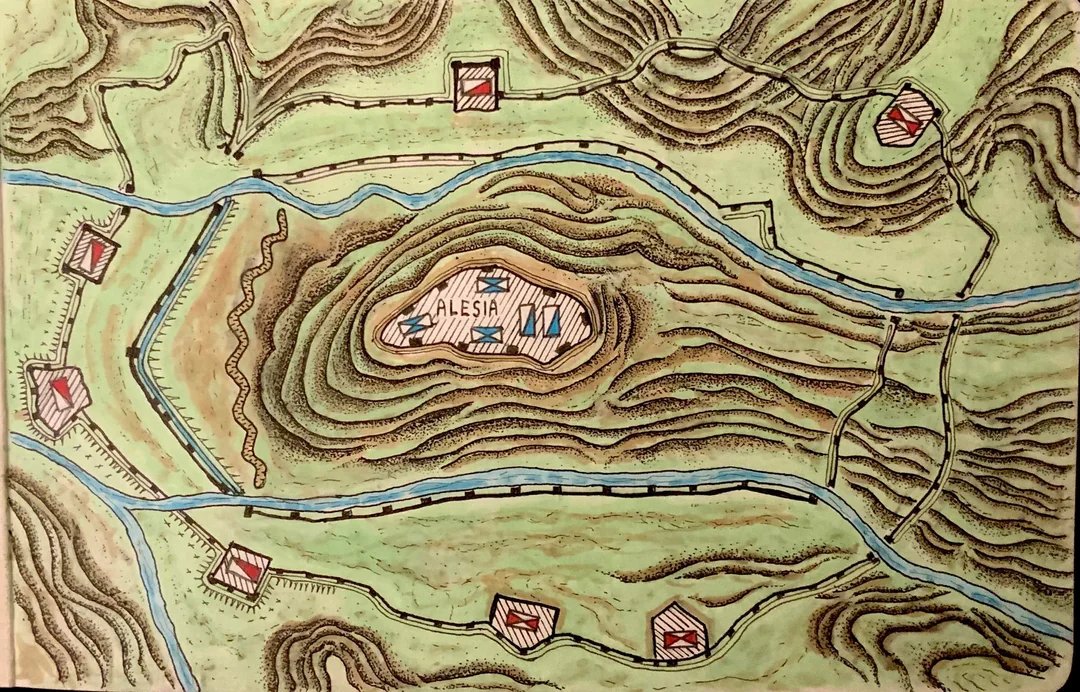1/12 He had defeated all his rivals and stood as the undisputed master of the Roman world. But Julius Caesar was about to learn that victory on the battlefield does not guarantee survival in the treacherous world of Roman politics.
This is the story of Caesar's final years, and his assassination on the Ides of March. 🧵
This is the story of Caesar's final years, and his assassination on the Ides of March. 🧵

2/12 Dictator For Life:
After crushing the last remnants of Pompey's supporters in Africa and Spain, Caesar returned to Rome in 45 BC. The Senate, now powerless, showered him with honours.
He was eventually granted the title Dictator Perpetuo—Dictator for Life. To the traditional Roman aristocracy, this was intolerable. The title of Rex (King) was a toxic concept in Rome, and Caesar was acting like one.
After crushing the last remnants of Pompey's supporters in Africa and Spain, Caesar returned to Rome in 45 BC. The Senate, now powerless, showered him with honours.
He was eventually granted the title Dictator Perpetuo—Dictator for Life. To the traditional Roman aristocracy, this was intolerable. The title of Rex (King) was a toxic concept in Rome, and Caesar was acting like one.

3/12 Caesar's Sweeping Reforms: As dictator, Caesar was ruthlessly effective. He launched a vast program of reforms:
- He created the Julian Calendar, the basis for the calendar we still use today.
- He relieved debt and stabilised the economy.
- He initiated huge public building projects.
- He granted citizenship to people in the provinces.
He was building a new Rome, but he was doing it without the Senate's consent.
- He created the Julian Calendar, the basis for the calendar we still use today.
- He relieved debt and stabilised the economy.
- He initiated huge public building projects.
- He granted citizenship to people in the provinces.
He was building a new Rome, but he was doing it without the Senate's consent.

4/12 The Seeds of Conspiracy:
The Roman elite watched in horror. They saw their power, prestige, and the very traditions of the Republic being eroded by one man's ambition.
A conspiracy began to form, led by the bitter and proud senator Gaius Cassius Longinus. Many of the plotters were men whom Caesar had pardoned after the civil war, a fact that highlights their ideological, rather than personal, motivation.
The Roman elite watched in horror. They saw their power, prestige, and the very traditions of the Republic being eroded by one man's ambition.
A conspiracy began to form, led by the bitter and proud senator Gaius Cassius Longinus. Many of the plotters were men whom Caesar had pardoned after the civil war, a fact that highlights their ideological, rather than personal, motivation.

5/12 The "Noblest Roman": Brutus
Cassius knew that for the plot to be seen as a righteous act of liberation, not just murder, he needed one man: Marcus Junius Brutus.
Brutus was a descendant of the man who had expelled Rome's last king 500 years earlier. He was also a close friend of Caesar. His involvement would frame the assassination as a painful duty to save the Republic from a tyrant.
Cassius knew that for the plot to be seen as a righteous act of liberation, not just murder, he needed one man: Marcus Junius Brutus.
Brutus was a descendant of the man who had expelled Rome's last king 500 years earlier. He was also a close friend of Caesar. His involvement would frame the assassination as a painful duty to save the Republic from a tyrant.
6/12 The Ides of March:
The conspirators set their date: March 15th, 44 BC. Caesar was scheduled to leave Rome just three days later for a massive military campaign against the Parthian Empire. They knew this was their last chance to strike.
History records numerous ill omens. Caesar's wife, Calpurnia, dreamt of his death, and a soothsayer had famously warned him to "Beware the Ides of March."
The conspirators set their date: March 15th, 44 BC. Caesar was scheduled to leave Rome just three days later for a massive military campaign against the Parthian Empire. They knew this was their last chance to strike.
History records numerous ill omens. Caesar's wife, Calpurnia, dreamt of his death, and a soothsayer had famously warned him to "Beware the Ides of March."
7/12 The Assassination:
Caesar dismissed the warnings and went to a Senate meeting being held at the Theatre of Pompey—ironically, a building built by his great rival.
The conspirators crowded around him under the pretence of presenting a petition. One of them, Tillius Cimber, pulled Caesar's toga from his shoulders. It was the signal. The daggers came out.
Caesar dismissed the warnings and went to a Senate meeting being held at the Theatre of Pompey—ironically, a building built by his great rival.
The conspirators crowded around him under the pretence of presenting a petition. One of them, Tillius Cimber, pulled Caesar's toga from his shoulders. It was the signal. The daggers came out.

8/12 "Et Tu, Brute?"
Caesar was stabbed 23 times. He initially tried to fight back, but according to the ancient historian Suetonius, when he saw his friend Brutus among the assassins with his dagger drawn, he gave up the struggle.
He is said to have uttered in Greek, "Kai su, teknon?" ("You too, my child?"). The famous Latin line, "Et tu, Brute?", was immortalised by Shakespeare but captures the essence of this profound betrayal.
Caesar was stabbed 23 times. He initially tried to fight back, but according to the ancient historian Suetonius, when he saw his friend Brutus among the assassins with his dagger drawn, he gave up the struggle.
He is said to have uttered in Greek, "Kai su, teknon?" ("You too, my child?"). The famous Latin line, "Et tu, Brute?", was immortalised by Shakespeare but captures the essence of this profound betrayal.

9/12 The Aftermath: A Fatal Miscalculation
With Caesar lying dead at the foot of a statue of Pompey, the assassins, who called themselves the "Liberators," believed the Republic was saved. Brutus raised his bloody dagger and declared "Sic semper tyrannis!" ("Thus always to tyrants!").
They expected the city to hail them as heroes. They were disastrously wrong. A stunned silence fell over Rome.
With Caesar lying dead at the foot of a statue of Pompey, the assassins, who called themselves the "Liberators," believed the Republic was saved. Brutus raised his bloody dagger and declared "Sic semper tyrannis!" ("Thus always to tyrants!").
They expected the city to hail them as heroes. They were disastrously wrong. A stunned silence fell over Rome.

10/12 Antony's Funeral Oration:
The "Liberators" failed to seize control. At Caesar's public funeral, his loyal co-consul, Mark Antony, delivered a masterful speech.
He read out Caesar's will, which bequeathed a large sum of money to every citizen and gave his personal gardens to the public as a park. Reminded of Caesar's generosity, the Roman populace erupted into a furious mob that hunted the assassins out of the city.
The "Liberators" failed to seize control. At Caesar's public funeral, his loyal co-consul, Mark Antony, delivered a masterful speech.
He read out Caesar's will, which bequeathed a large sum of money to every citizen and gave his personal gardens to the public as a park. Reminded of Caesar's generosity, the Roman populace erupted into a furious mob that hunted the assassins out of the city.

11/12 The True Heir:
Caesar's will contained an even bigger surprise. He had posthumously adopted his 18-year-old grand-nephew, Gaius Octavius, and named him his primary heir.
This quiet, politically astute teenager would take the name Caesar, and eventually become known to history as Augustus, the first true Roman Emperor.
Caesar's will contained an even bigger surprise. He had posthumously adopted his 18-year-old grand-nephew, Gaius Octavius, and named him his primary heir.
This quiet, politically astute teenager would take the name Caesar, and eventually become known to history as Augustus, the first true Roman Emperor.

12/12 The assassination of Julius Caesar did not save the Republic; it guaranteed its destruction. It plunged Rome into another 13 years of brutal civil war that destroyed the old order for good.
The men who murdered Caesar to prevent a king inadvertently created the very conditions that made an emperor inevitable. Did Brutus and the "Liberators" betray Rome, or did they simply hasten its destiny?
The men who murdered Caesar to prevent a king inadvertently created the very conditions that made an emperor inevitable. Did Brutus and the "Liberators" betray Rome, or did they simply hasten its destiny?

• • •
Missing some Tweet in this thread? You can try to
force a refresh






















